1. EXTENSION CORD SAFETY:
- Never remove an extension cord's grounding pin to make it fit into a 2-prong outlet. The grounding pin helps to trip the breaker, stopping electricity. If you remove the pin, electrocution can occur.
- Don't run electrical cords under any rugs or furniture, tape them to the floors or attach them to surfaces with staples or nails (metal).
- If your cord starts to feel warm or hot to the touch, stop use right away. The cord feels hot to the touch because it is overloaded and should be changed to a cord with a higher rated cable.
- If the cord is damaged, please discontinue use right away. A damaged cord may cause shock or fire.
- When unplugging cords, pull from the plug, not the cord.
- Do not overload your cord, check the rating, because overloading the cord can cause fire.
- When connecting the plug to the socket or connector, be sure it is always fully inserted.
2. OUTDOOR PROJECTS REQUIRING EXTENSION CORD USE:
- Make sure the cords you are using are marked for outdoor use. You will know which cords are safe for outdoor use by taking a look at the cable jacket. If the cable jacket has an SJTW or STW printed on it, that means it is safe for weather.
- Do not use indoor cords outdoors.
- Unplug and store your cords indoors when not in use
3. WEATHER:
- Wet conditions can lower skin resistance and allow more current to flow through your body.
4. CHILDREN:
- Keep children away from electrical cords and outlets if possible. If not possible, cover all unused receptacles with childproof covers.
5. RECEPTACLE SAFETY:
- Replace receptacles if they are broken, feel hot to touch, spark, make noise when in use or no longer hold a plug securely.
- Replace broken faceplates to avoid touching a plug to a live receptacle.
- When using a grounding adapter, be sure the receptacle is grounded first. Also, secure the tab on the adapter under the cover plate screw.
- Be sure you have installed the properly rated receptacle when replacing them. (Example - You should not install a 20 Amp receptacle to a 15 Amp Circuit.)
6. OVERLOAD MAX POWER:
- To avoid overloading your circuit, check the electrical equipment or devices manual to find the max power and average running power.
- Consult with your supplier or an expert when you are unsure if the circuits are overloaded.
7. INDUSTRIAL/CONSTRUCTION:
- Always use Personal Protective Equipment (PPE) such as insulated gloves to work on energized equipment.
- Electrical tools with exposed metal parts need to have a 3-prong grounding plug and be grounded or are double-insulated. Please contact us with any safety-related questions or concerns you may have.
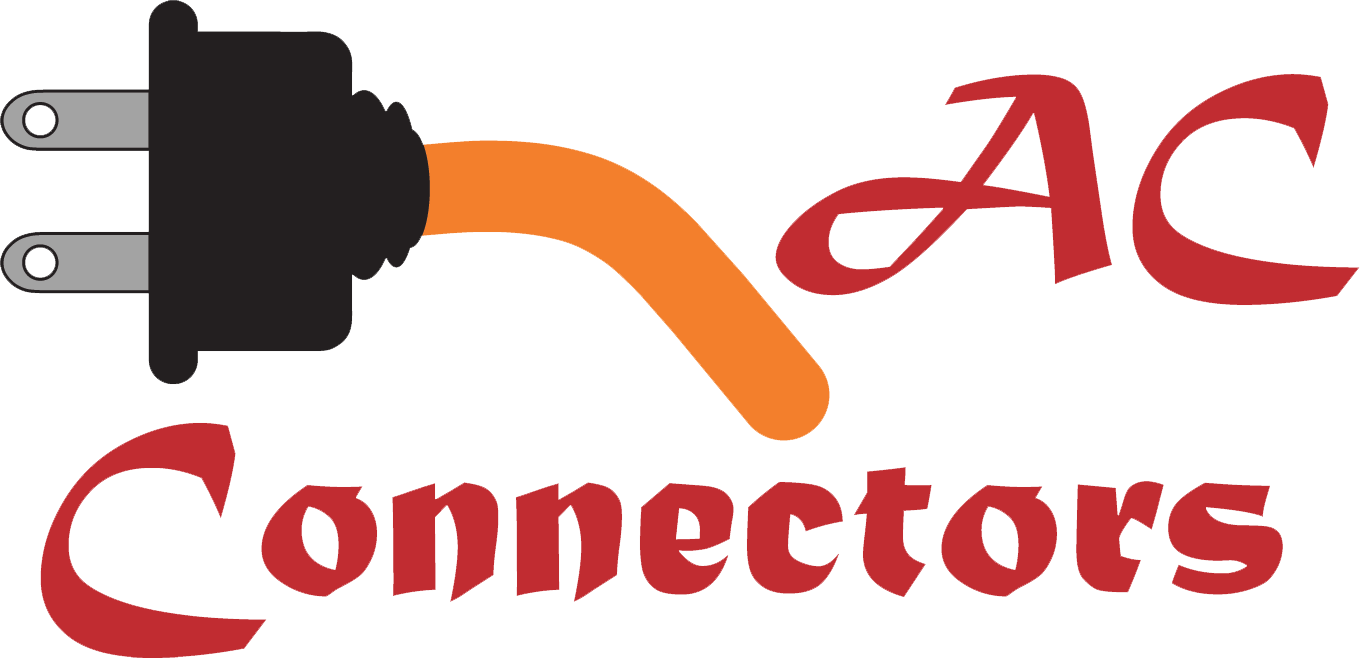

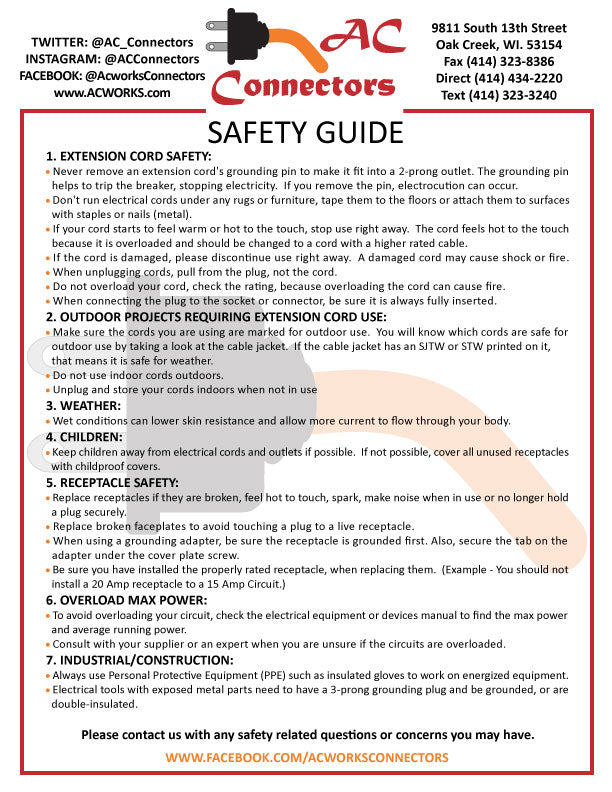
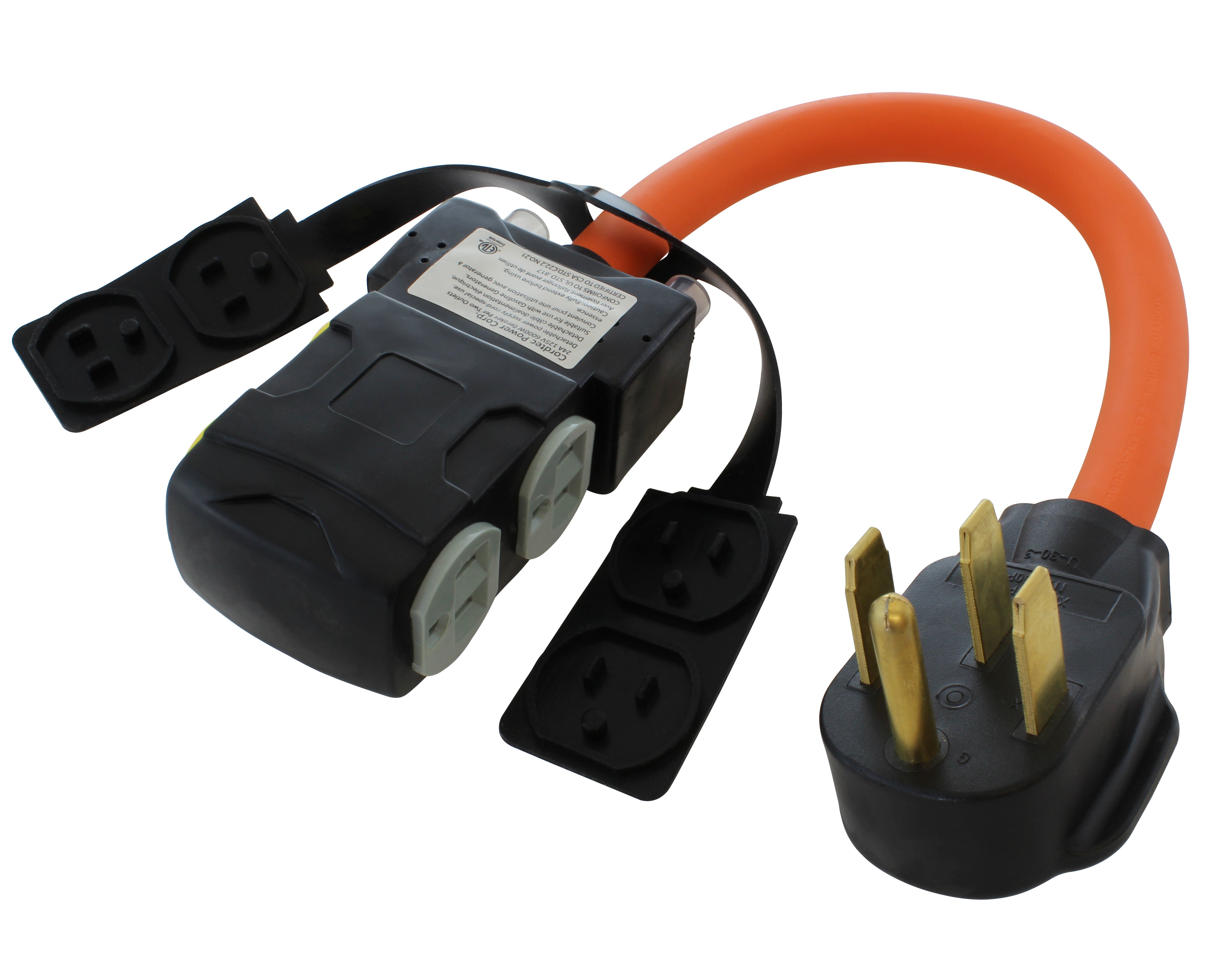
![AC WORKS® [ASINSS2PBX-G] 50A Locking 4-Wire CS6375/ SS2-50 Heavy-Duty Transfer Switch Inlet Box](http://acworks.com/cdn/shop/files/ASINSS2PBX-0_0206b362-7c90-42a5-8754-0685c13dab7e.jpg?v=1758051675&width=2500)
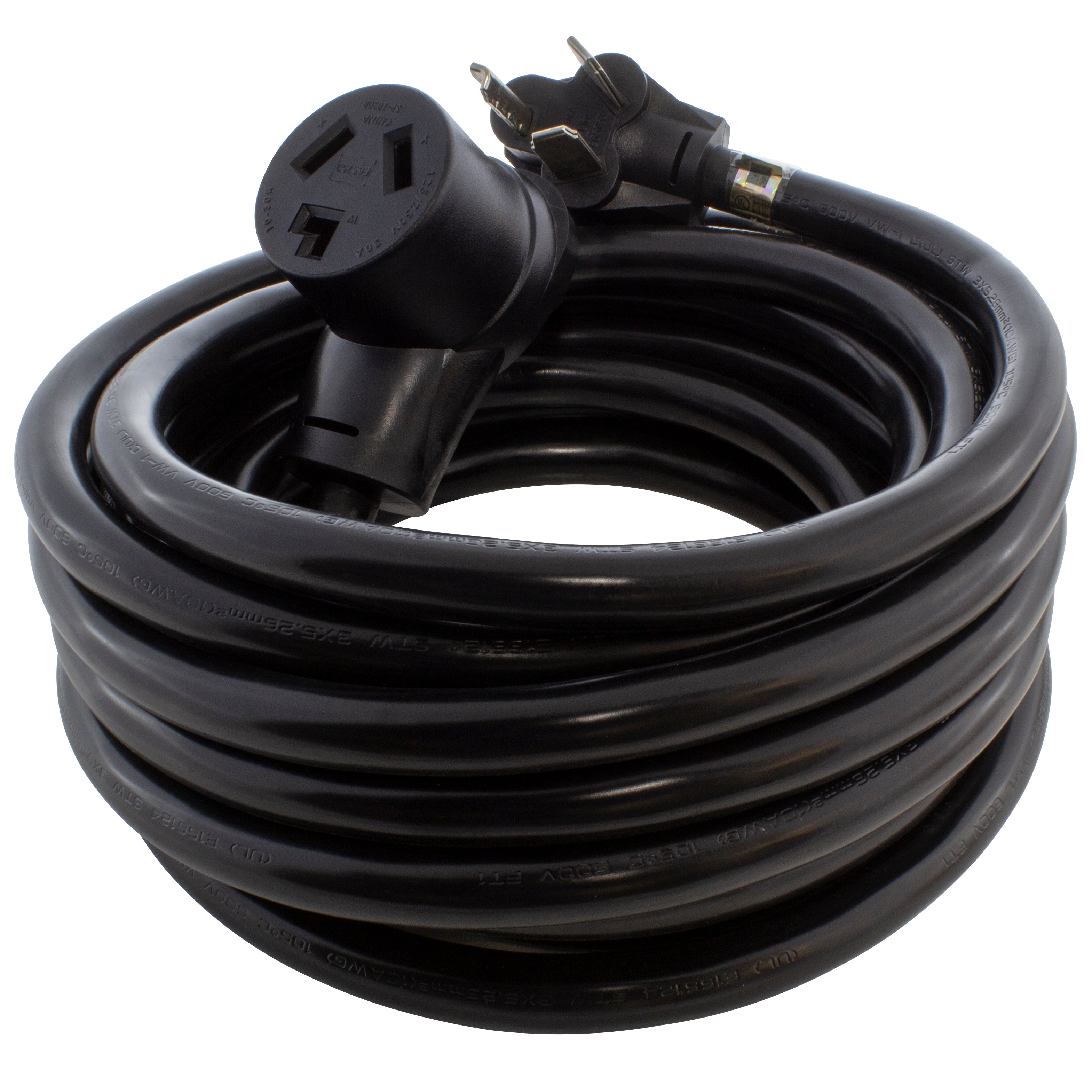
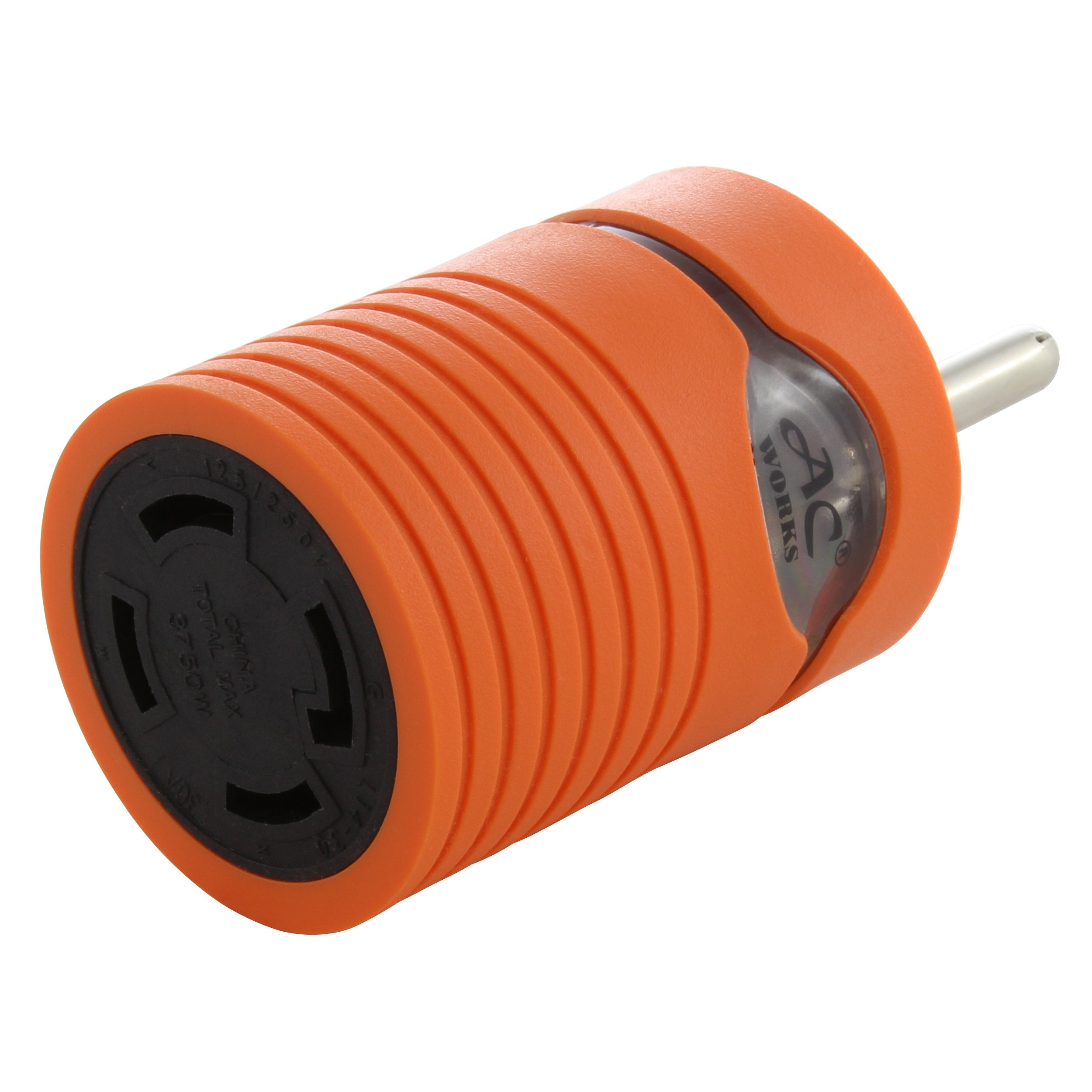
![AC WORKS® [S1430CBF520] 1.5FT 14-30P 4-Prong Dryer Plug to (4) Household Outlets with 24A Breaker](http://acworks.com/cdn/shop/products/S1430CBF520.jpg?v=1666103519&width=4656)
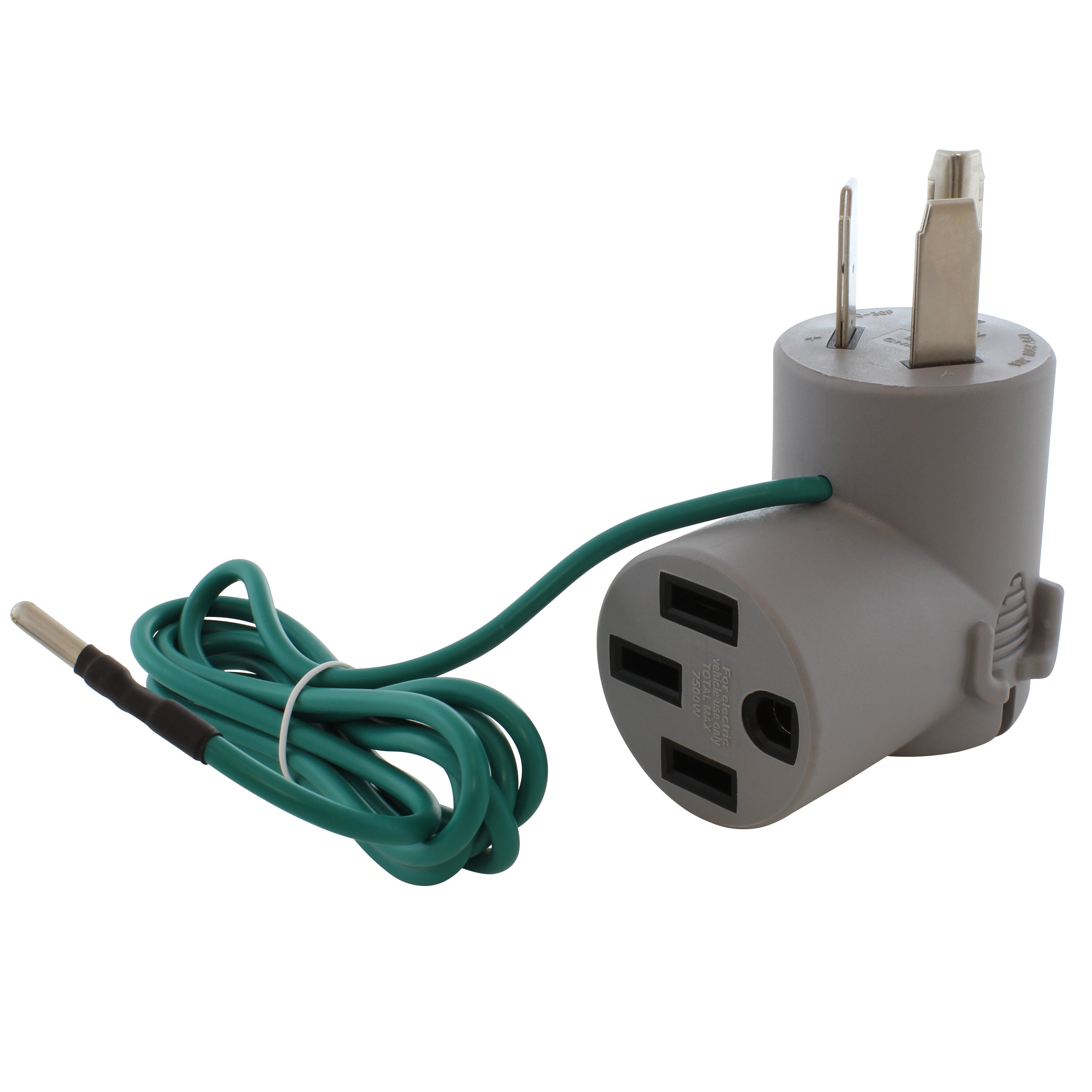
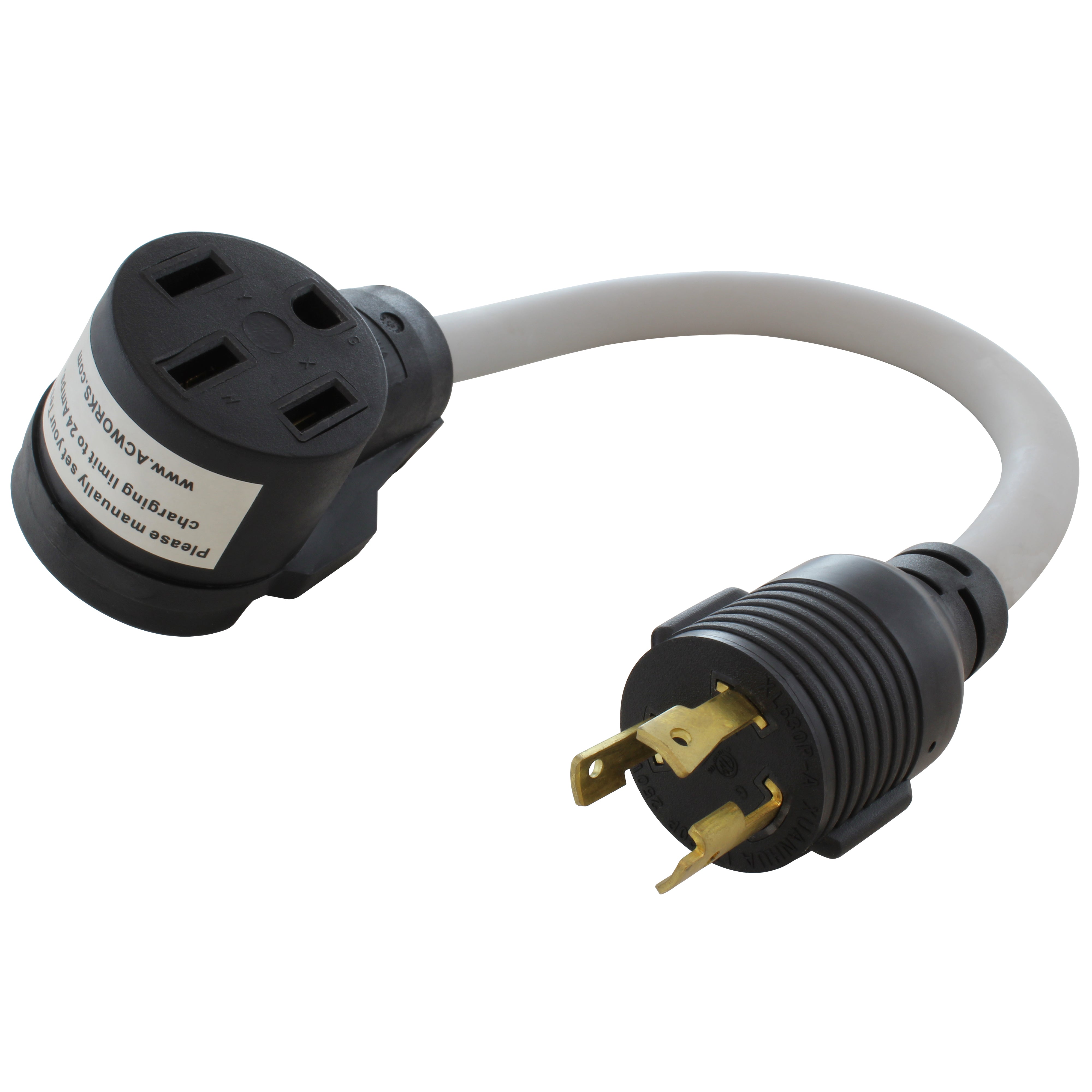
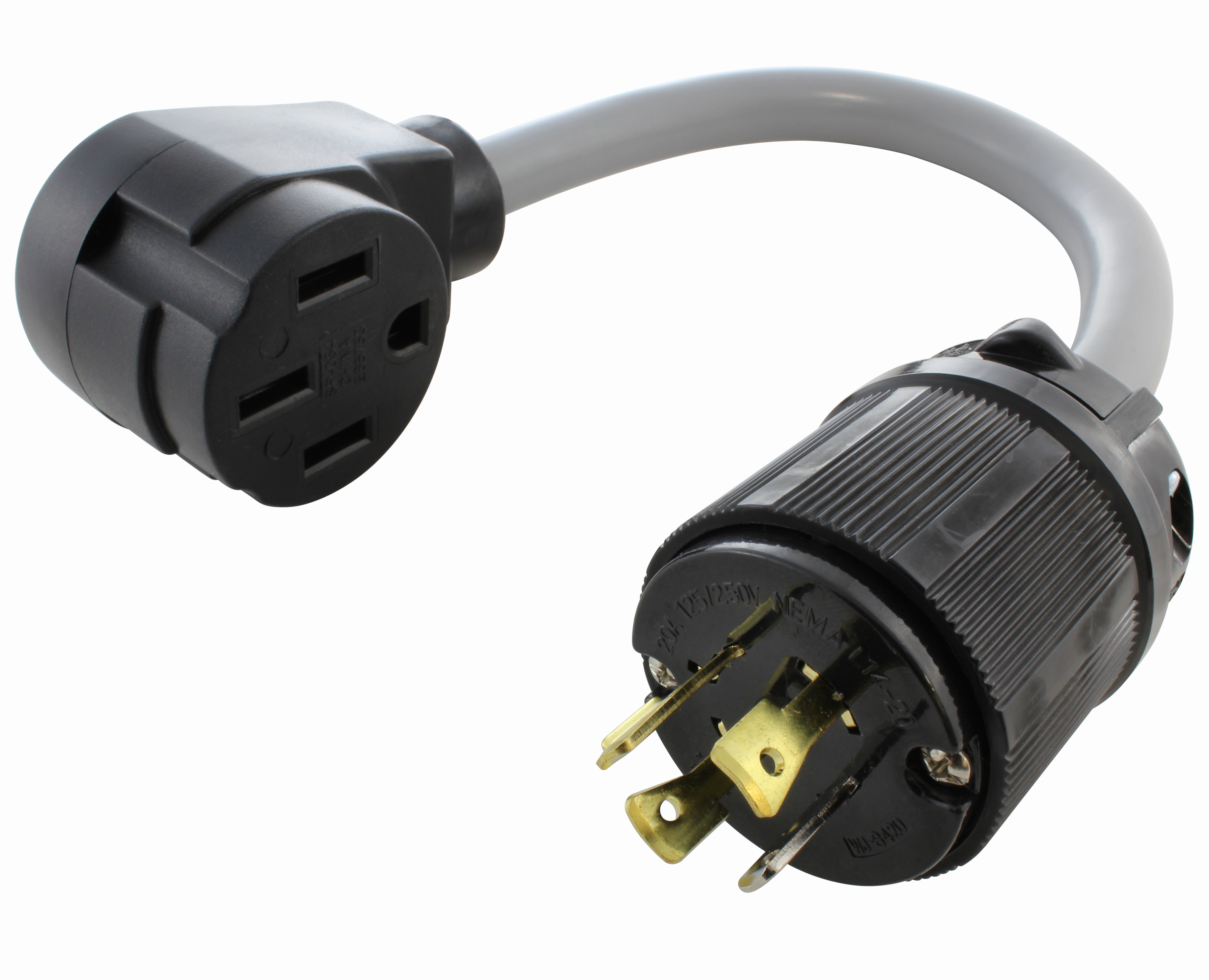
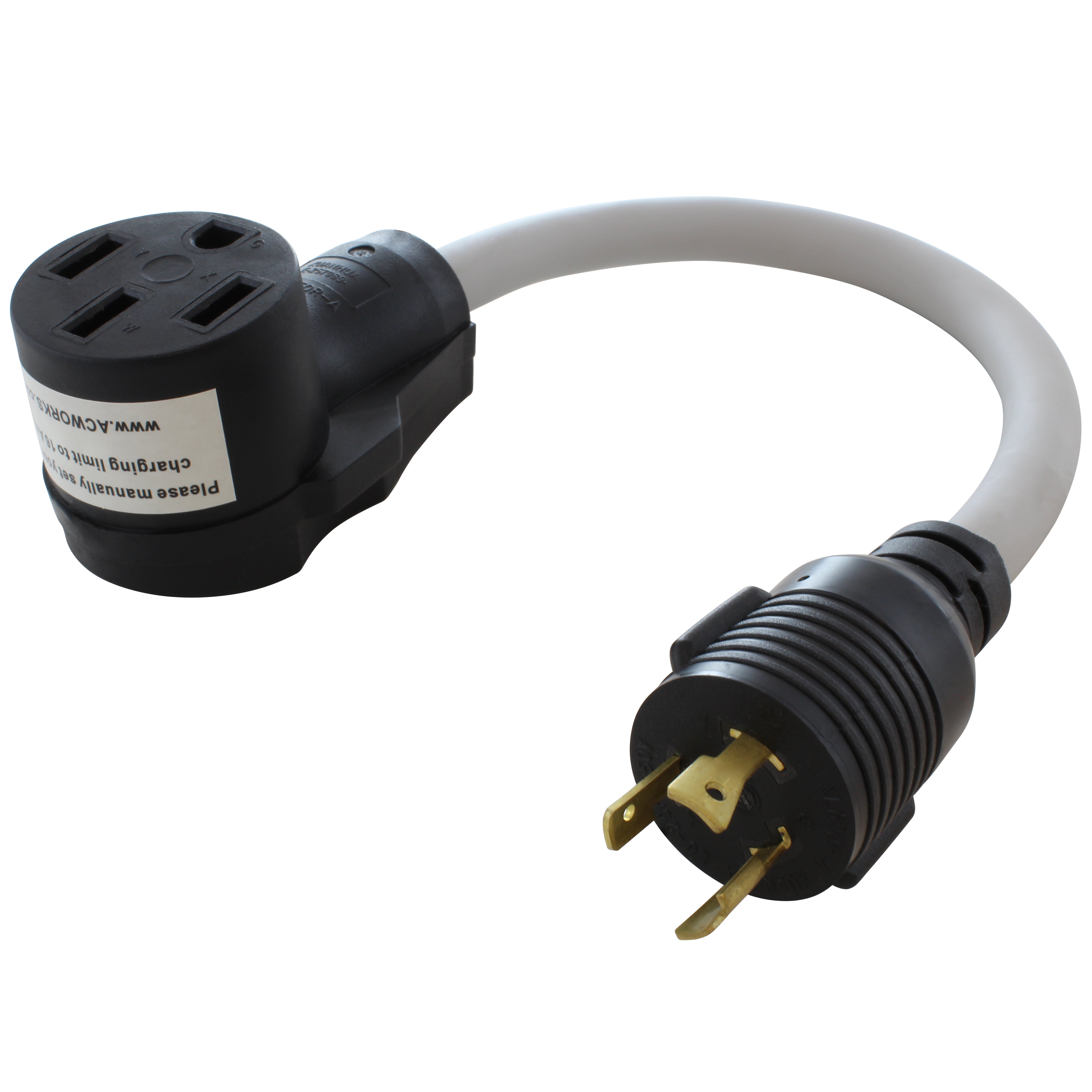
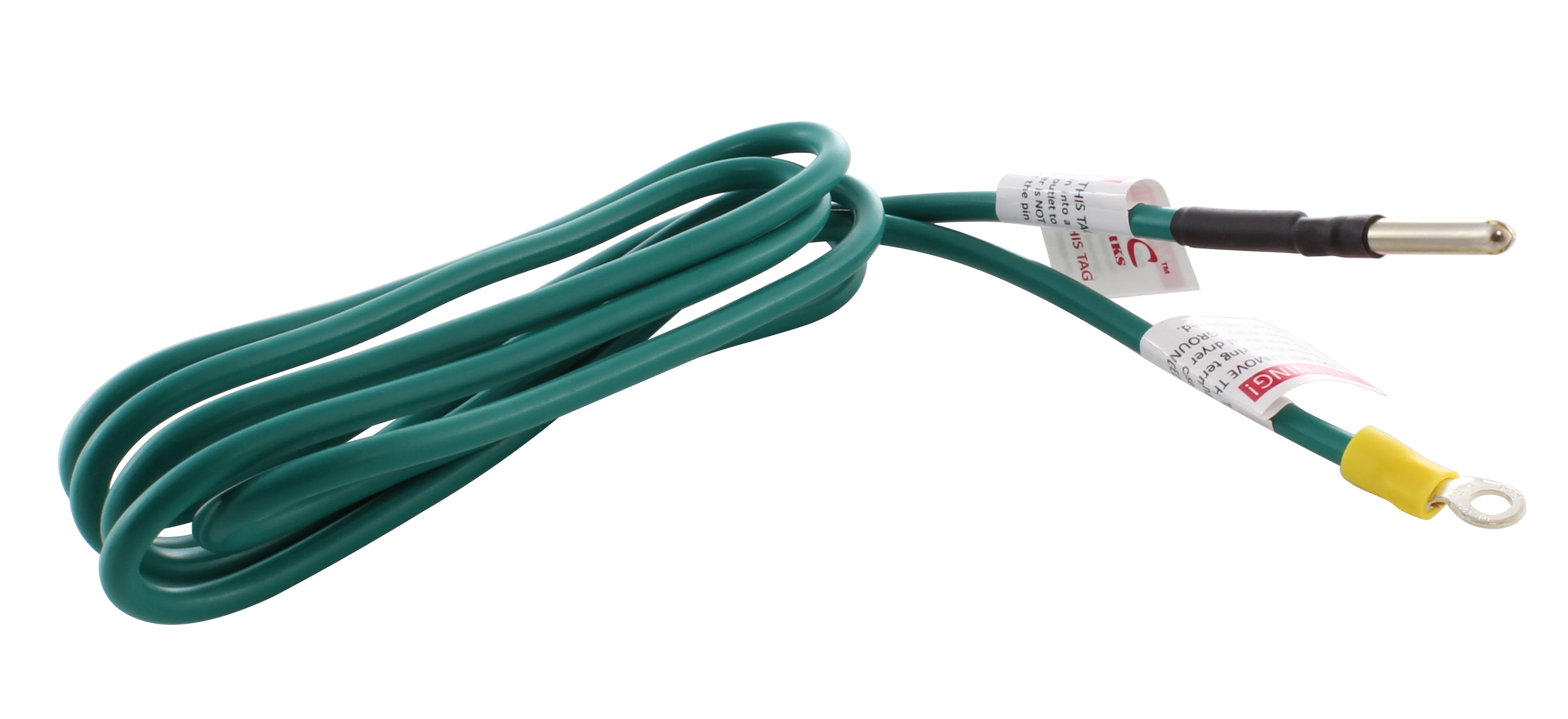
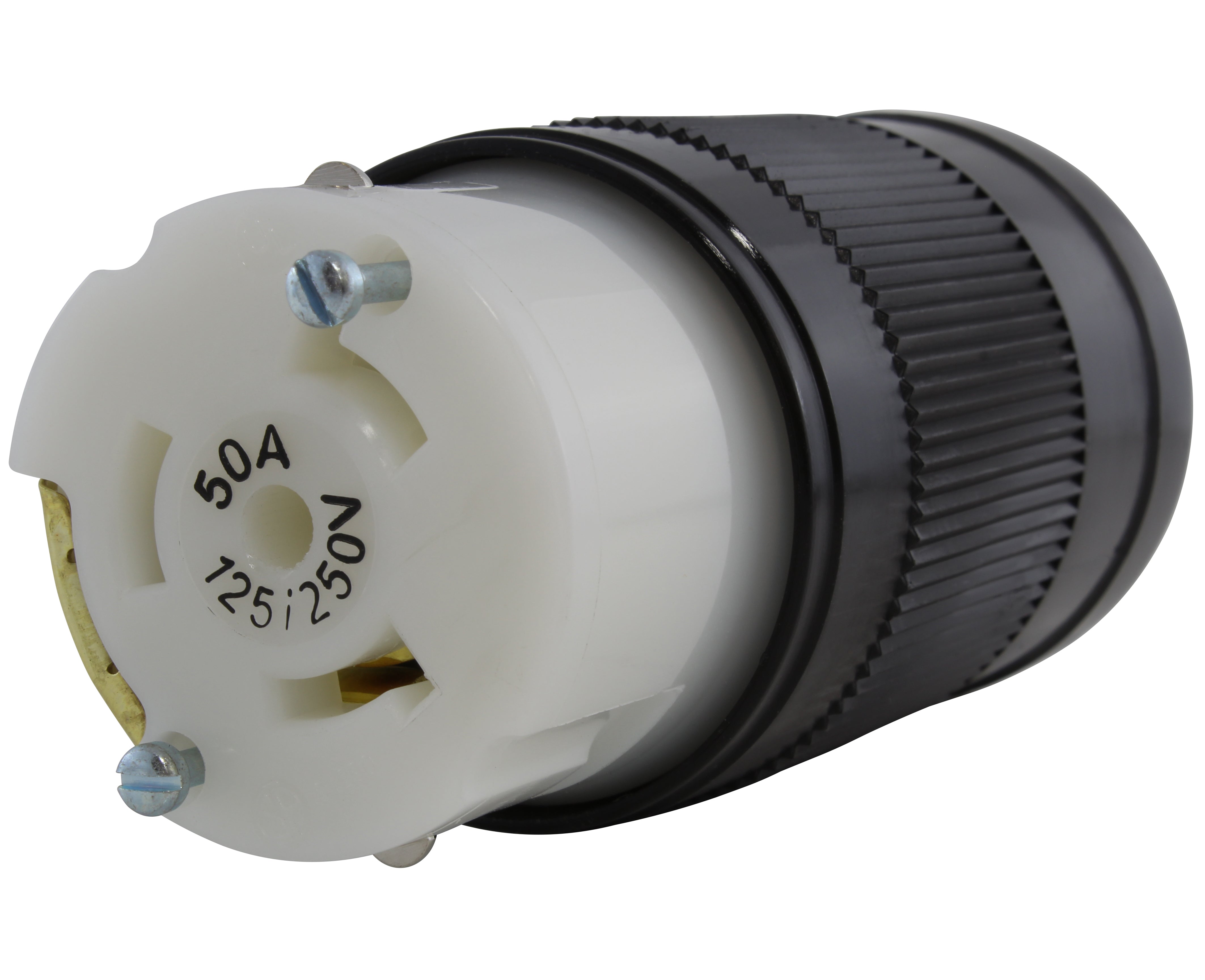
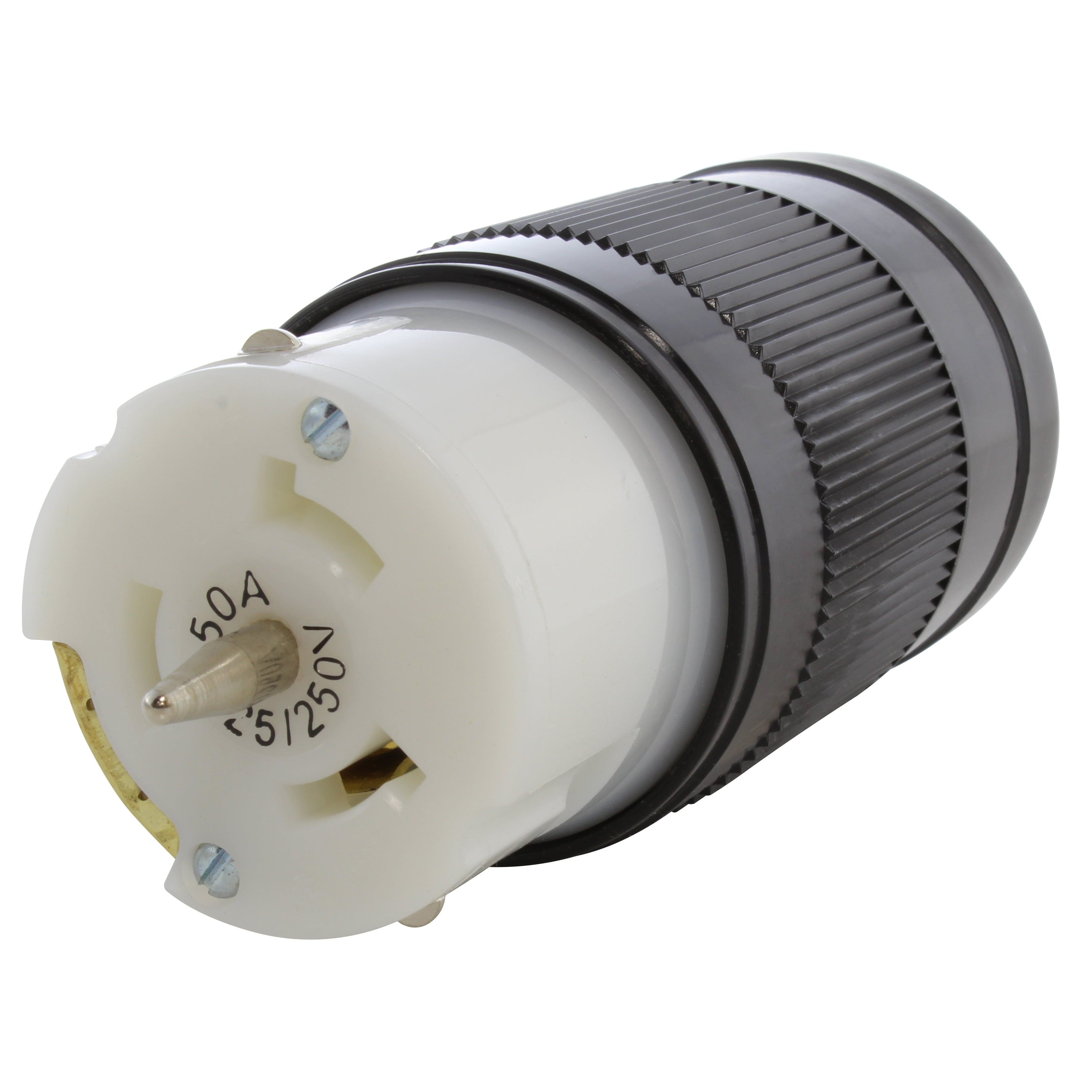
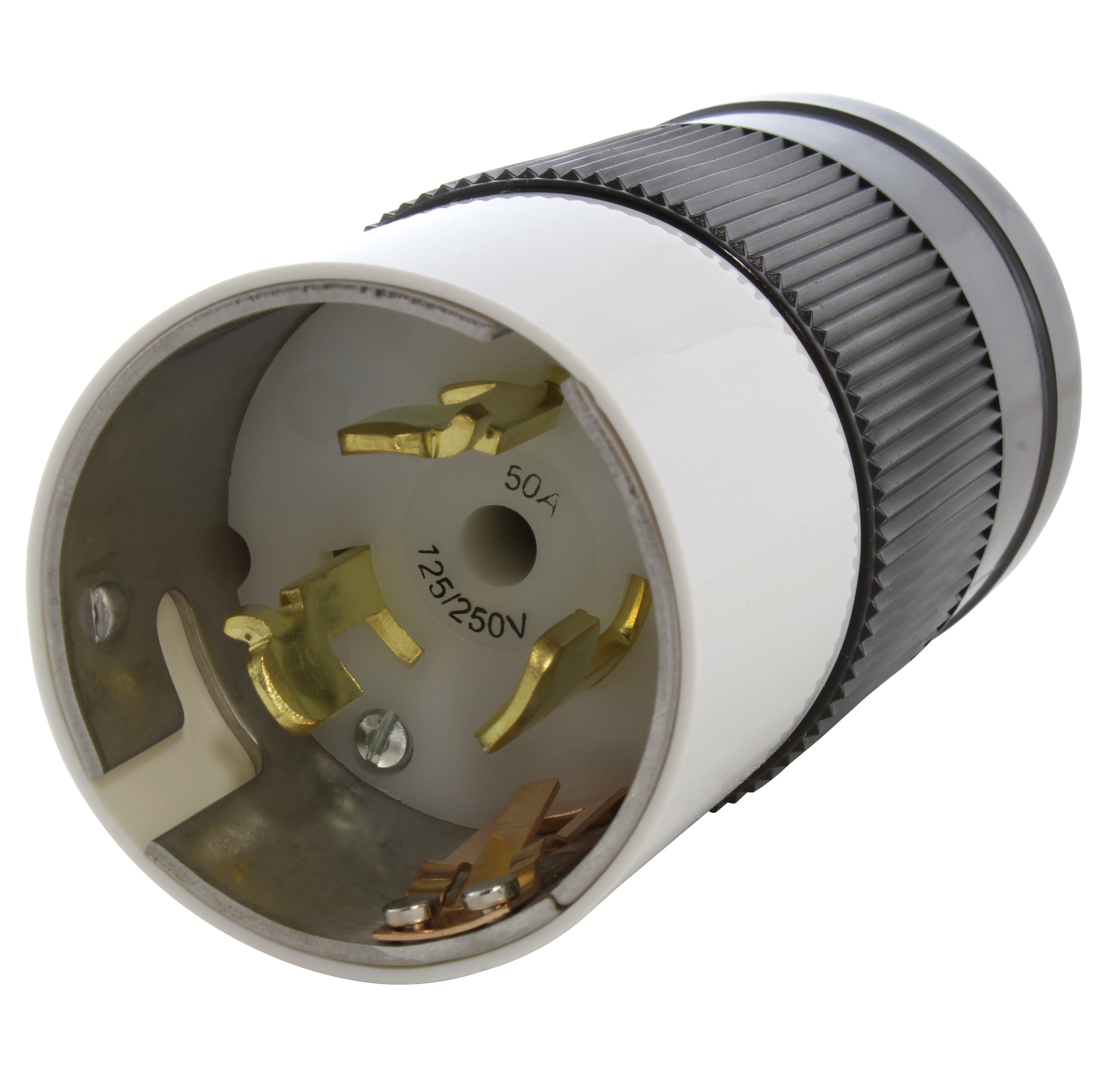
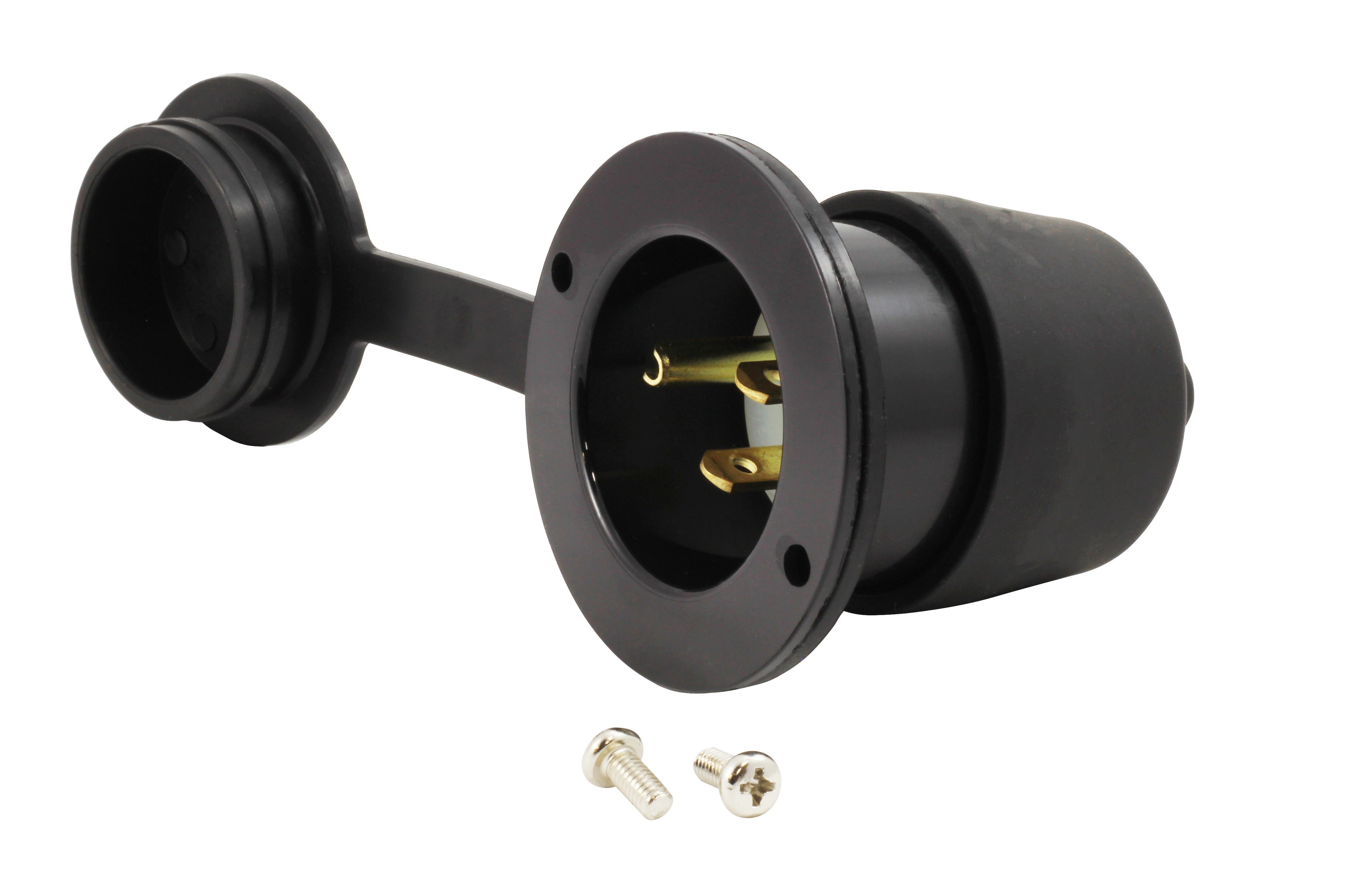
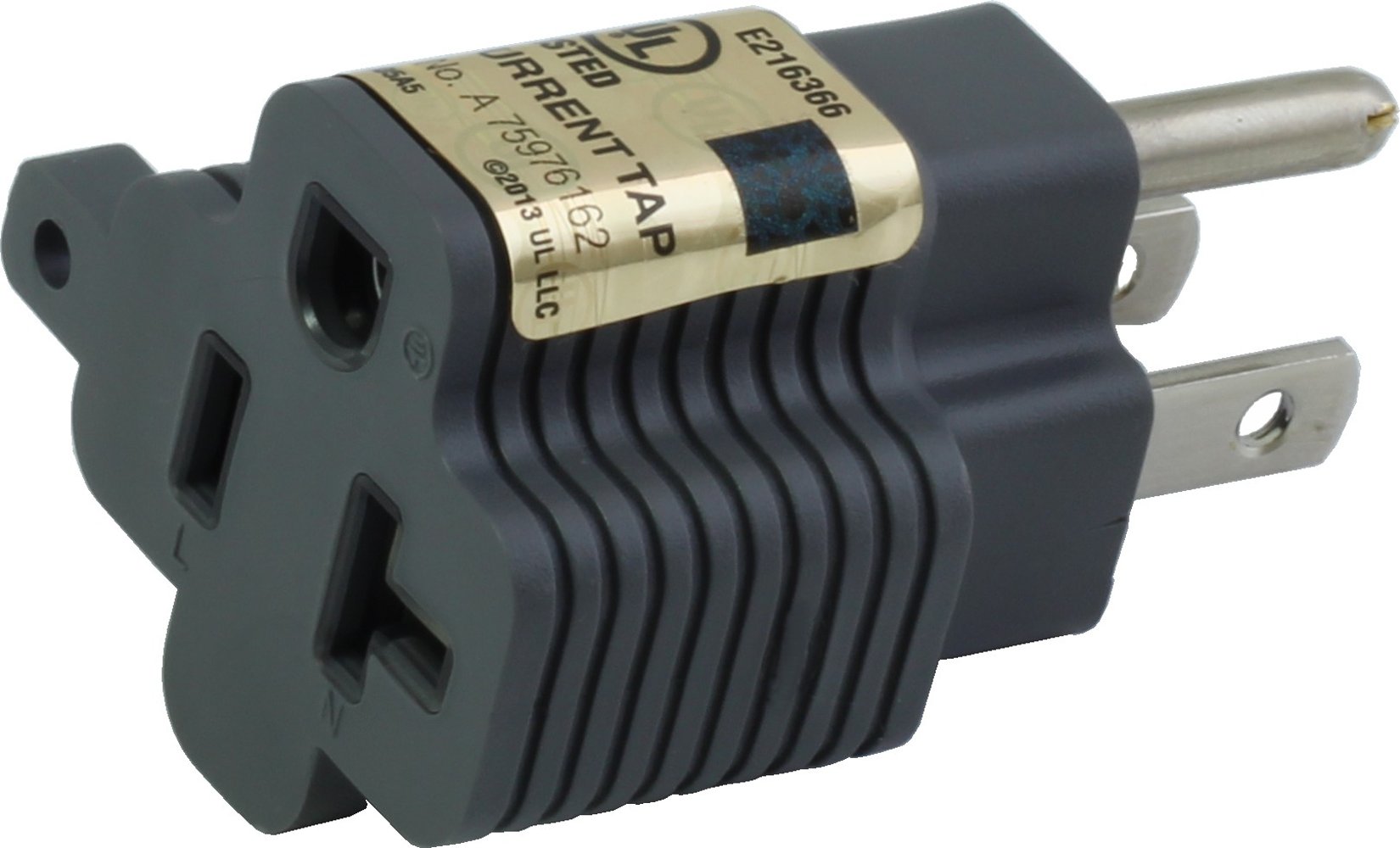
![AC WORKS® [ADV104] 3-Prong Heavy-Duty V-DUO Household Outlet Adapter](http://acworks.com/cdn/shop/products/ADV104-0.jpg?v=1605738768&width=3128)
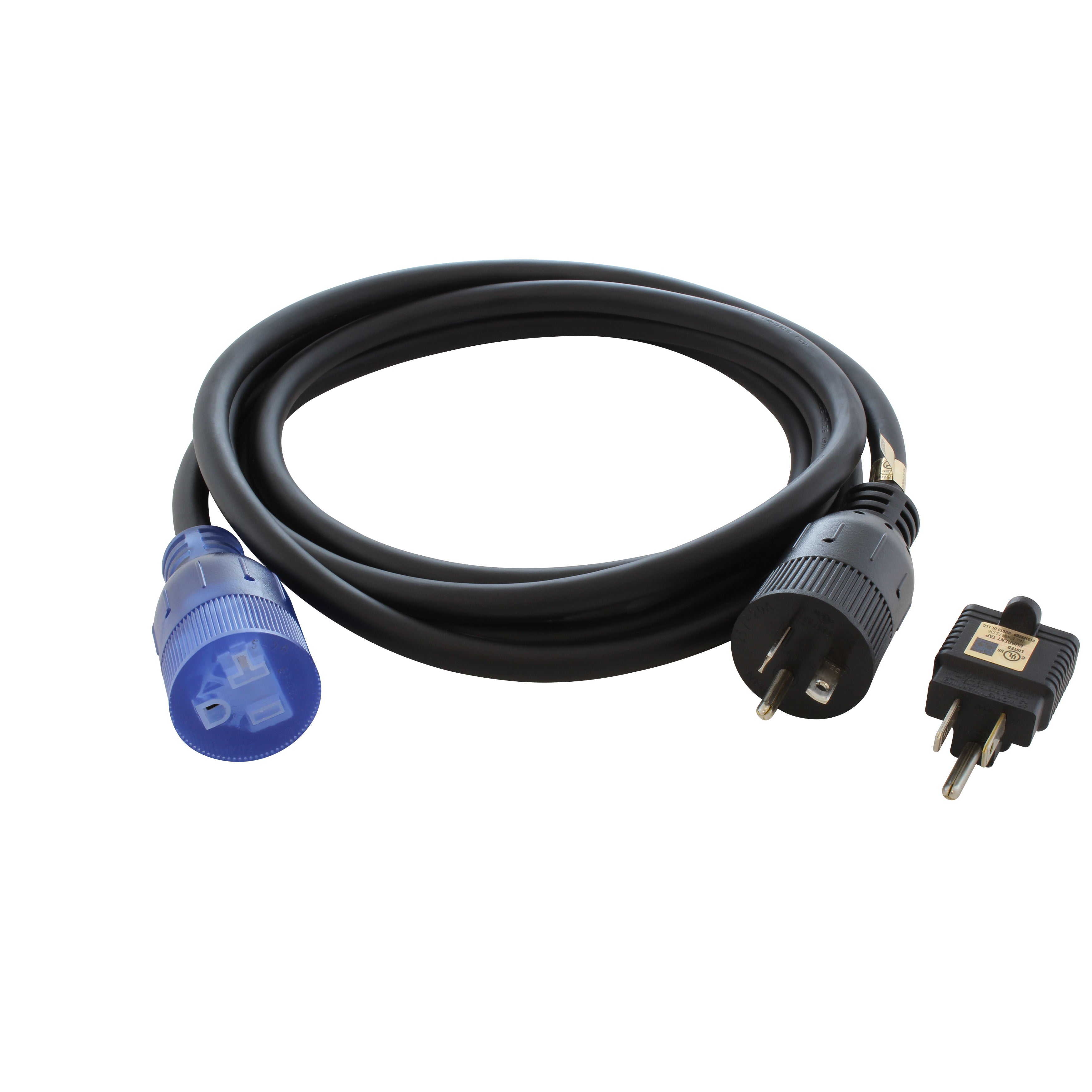
![AC WORKS® [XH515520] 15A to 15/20A 125 Volt Plug Adapter with ETL Safety Approval](http://acworks.com/cdn/shop/files/XH515520-0_daea425a-f439-48df-bb75-052167057f12.jpg?v=1729091519&width=2500)
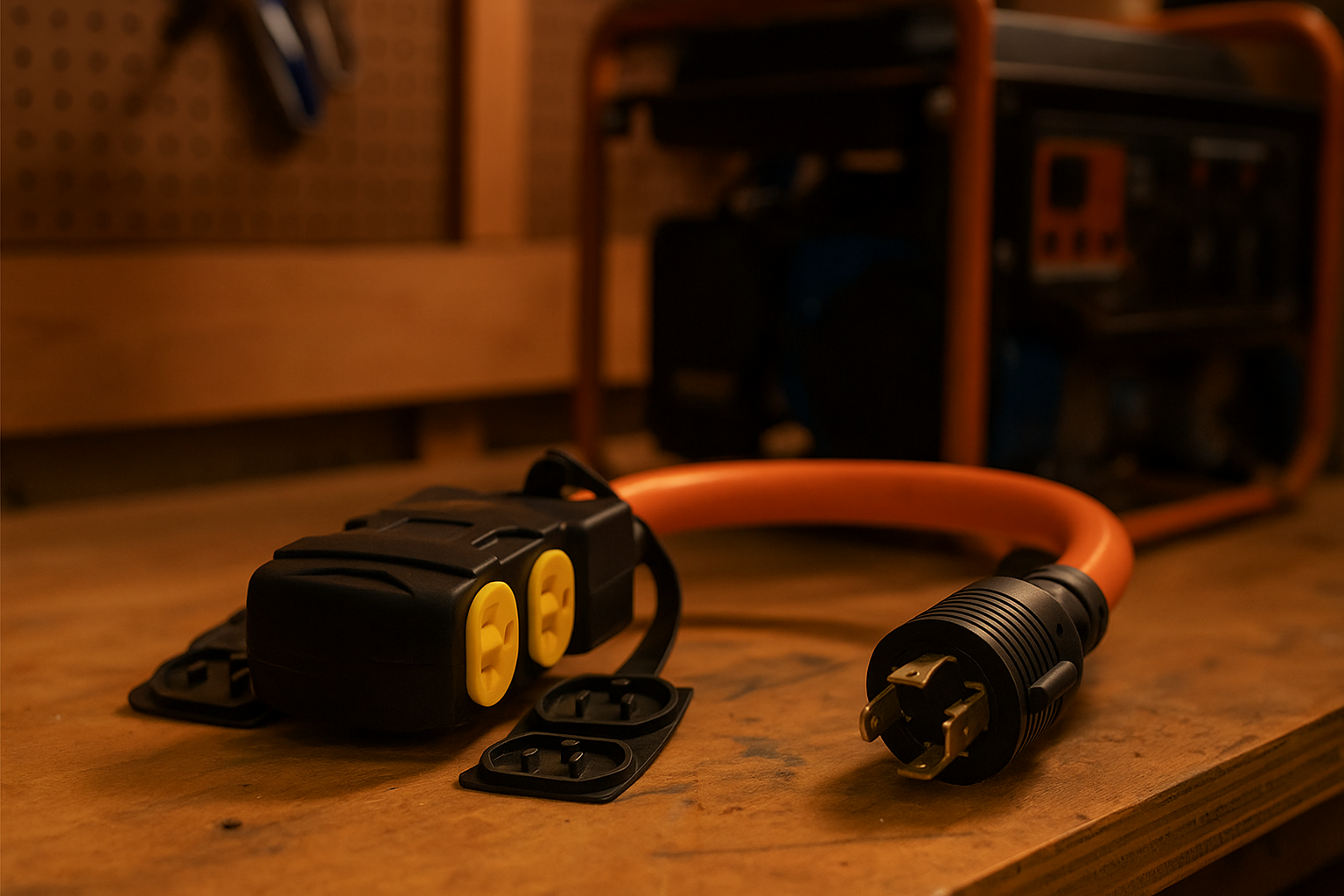
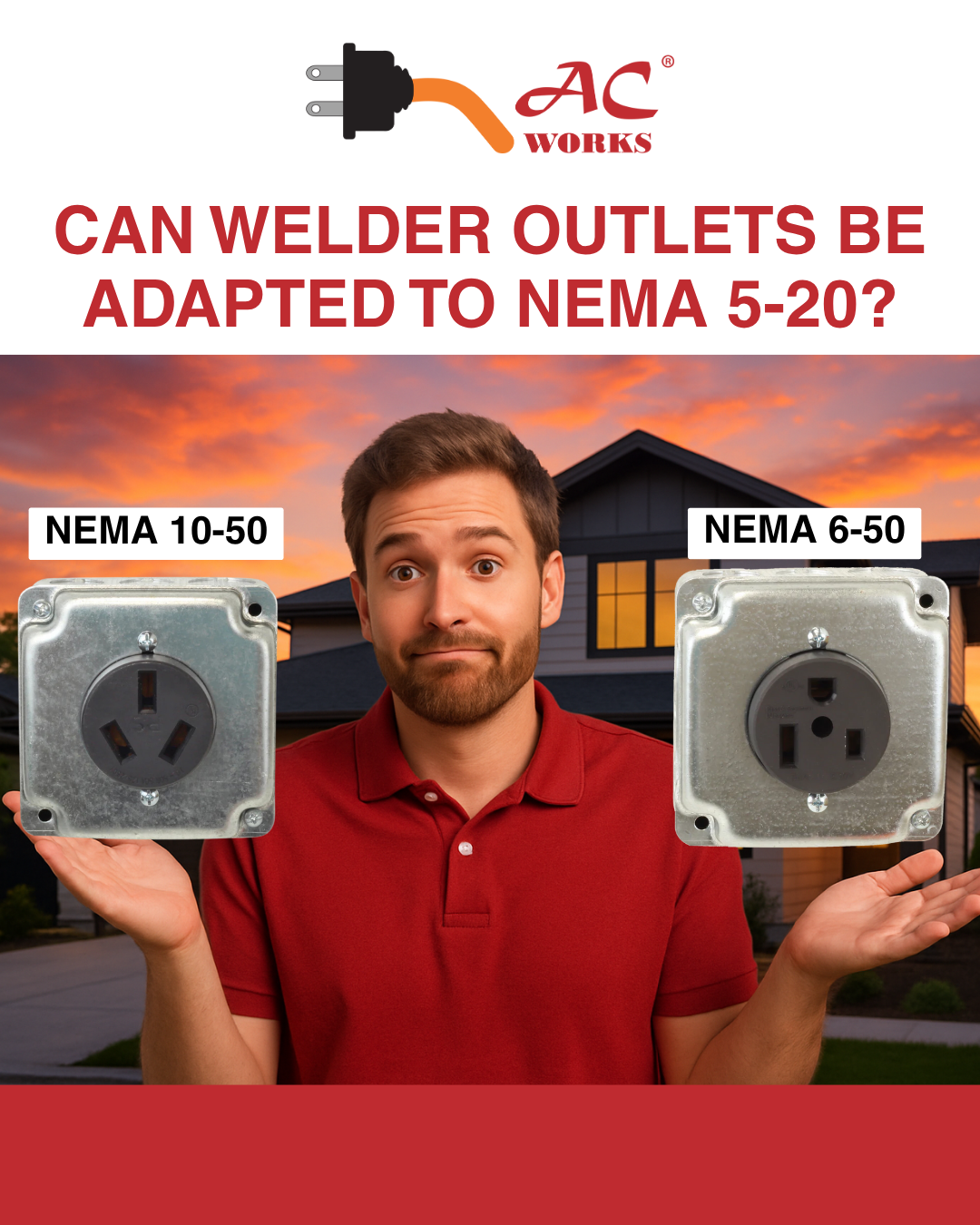

Share:
Download: AWG Chart
AC Connectors and AC WORKS® Limited Warranty